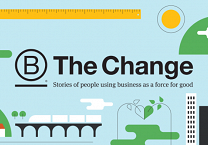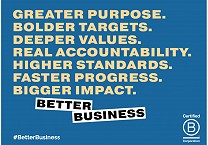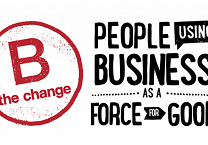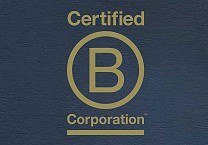The race toward better chemical regulation
by Robert L. Kerr
02 June 2014

In Through the Looking Glass, Alice asks the Red Queen why they’re not getting anywhere even though they’re running fast. The Queen replies:
"Now, here, you see, it takes all the running you can do, to keep in the same place. If you want to get somewhere else, you must run at least twice as fast as that!"
For many companies, trying to keep up with and manage the astonishingly rapid changes in customer and regulatory requirements for tracking or restricting chemicals in their materials and products must often feel like running on the Red Queen’s treadmill.
And the treadmill is speeding up.
- Retailer initiatives: Walmart and Target have launched initiatives designed to reduce or eliminate hazardous chemicals in products they buy from suppliers.
- New state programs: For example, Washington requires all companies selling children’s products to report the presence and concentrations of specified hazardous chemicals and, then publishes this data on a website for public viewing. California’s new regulations require companies to find safer chemical alternatives to replace ‘chemicals of concern’ in specific, widely-used consumer products.
- More stringent international chemical restrictions: From Europe’s REACH law for hazardous chemicals to a host of new regulations in the growing Asian markets, the changes are accelerating. To take a single sector as an example, the American Apparel and Footwear Association’s regular updates on global restrictions for chemical residues in clothing included over 150 changes in regulatory scope or national requirements from 2012 to 2013 (see here and here).
Is there a way to get off the Red Queen’s treadmill?
Keeping up with the growing demands for chemical data using spreadsheets or simple databases will become increasingly unrealistic. Managers need tools that enable them to organize, analyze, and make decisions about chemicals and materials in their supply chains and products quickly and accurately. When the European Union published the first list of restricted chemicals under their REACH regulations, most companies struggled to determine which of the newly-regulated chemicals were in their products, and where the chemicals came from in their supply chains. But not Seagate. Because the American data storage company had a comprehensive chemical data management system in place, they were able to react quickly. Brian Martin, Seagate’s Senior Director for Product Environmental Compliance, explains:
“We realized early on that we would either have to spend an awful lot of money on resources, or we would have to put in place some tools that could help us automate the process…. We only have one form that contains all of our data. We bring it into a software tool that … helps us process those data and automate data collection from suppliers. When [the EU REACH] Directive was launched and the list of Substances of Very High Concern came out … we had our first response to the REACH SVHC list within 15 minutes. We confirmed that by polling a subset of our suppliers within the next 48 hours. Within a couple of days, we had a very solid answer to REACH compliance that we could give to our customers with a high degree of credibility.”
Like Seagate, a few other leading companies have recognized the business value of efficient chemical data management tools and systems. They have either developed their own in-house chemical data management software or are leveraging commercial product and chemical assessment tools.
Finding the Right Solution
Before diving into one of these solutions, companies should understand both the strategic opportunities deriving from improved chemical data management, as well as the many short-term demands. Additional benefits range from consolidating purchases and reducing costs to improving the environmental or health profile of products. Companies should also consider staffing, budget, and any existing systems that may need to be integrated before making a selection.
Once companies understand their needs, they will be able to assess their data management options more intelligently to find the right solution. The options generally offer three functional capabilities:
- Identification of hazard characteristics of chemicals and products
- Inventory of chemicals and products with associated hazards
- Analysis and comparison of chemicals and products using inventory and hazard data
Many companies have an immediate need to understand the hazard characteristics of their ingredient and material options. Tools such as the Green Screen List Translator provide this by drawing from global authoritative lists and databases in a single resource. For inventories based on the chemicals and materials used in products, companies may turn to options such as the Actio Material Disclosure Tool.
The analytic class of tools encompasses a large field of options including GreenWERCS and SciVera Lens CSA, among others. These expanding solutions help companies to understand hazard characteristics, keep inventories, and score and analyze materials and products. The latter capability is important in supporting the systematic assessment of safer alternatives. With the arrival last fall of the California Consumer Product chemical alternative assessment regulations, these solutions may prove to be particularly important.
Companies wanting to step off the Red Queen’s treadmill should take care to choose the right data management solution to ensure that they have the ability to manage chemical risks and customer and regulatory demands, while deriving additional business benefits. Running with the Red Queen just isn’t the answer. But the right software can provide the solution to the Red Queen’s dilemma.
Pure Strategies will be releasing a report evaluating chemical hazard software tools in Fall 2014. For more information, contact rkerr@purestrategies.com. This article was originally published in GreenBiz.
Written by Robert L. Kerr
Bob Kerr is Co-founder and Principal of Pure Strategies, Inc. During the last three decades, he has advised businesses, agencies and non-profit groups on approaches to accelerating environmentally and socially sustainable products, services and programs. Recent work includes support for the multi-stakeholder, safer-chemical initiatives of the Green Chemistry and Commerce Council and for company supply-chain sustainability assessments and initiatives. An expert in chemicals management, Bob authored Sustainable Chemicals Management Software: A Pure Strategies Review of Tools for Managing Chemicals in Products.












